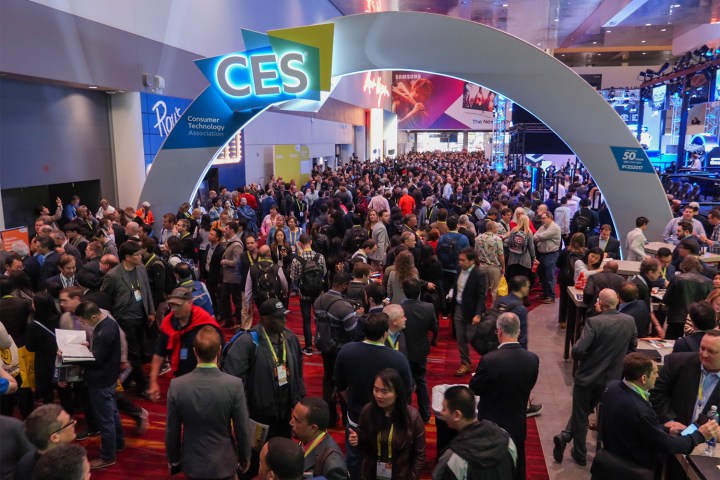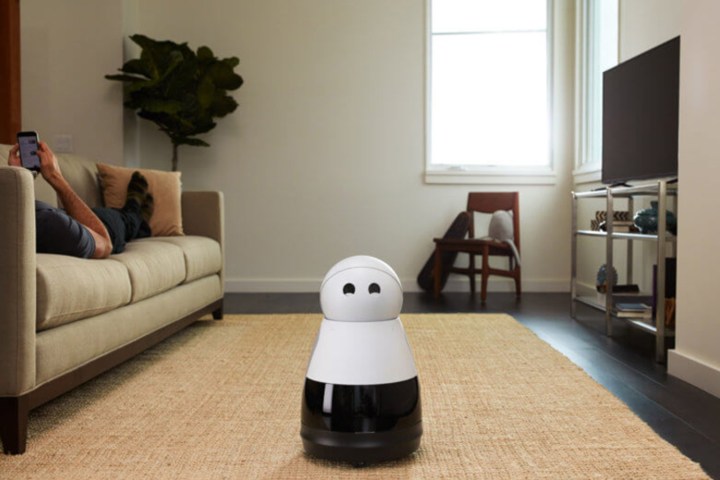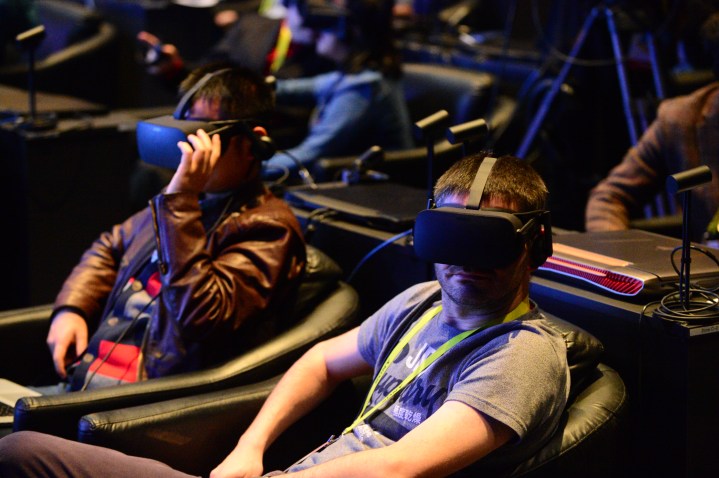
However at CES, many gadgets on display in Las Vegas truly made good on those promises. It’s as if the industry chugged a few cans of Red Bull and suddenly found its way after years of spending much of its time just repackaging old technologies in shiny new exteriors. If you watched any of our live stream coverage, this isn’t just an opinion held by myself but several others here at Digital Trends.
In the interest of full disclosure, I did not attend CES 2017 in person. In fact, the last time I did was in 2006. But just about every year since then, I haven’t regretted it. The experience on the show floor versus having the birds’ eye view from afar are totally different. On the floor, it’s easy to get wrapped up in the Las Vegas-style glitz and glam — after all that is the point. Covering it from afar allows you to separate yourself from all that and look at the big picture.
Most years, that big picture isn’t a feeling of real excitement of what’s to come in the following year in tech. More of a hope: “Meh, maybe next year will be better.”
This year was different. As I sat here watching livestreams of the keynotes, our own coverage here on Digital Trends, and read the multitude of news stories written over the past week, I found myself saying “whoa” more often than not. The CTA’s tagline this year ironically was that exact phrase, and CES 2017 to me fit that bill. I actually regretted not being able to see this all in person, because some of it was just that unbelievable. Even evolutionary innovations seemed turbocharged.
Bottom line? All I can say is hold onto your hats folks, it’s going to be a wild ride in 2017.
Nvidia’s deep dive into AI
The revolutionary aspect of CES 2017 is perhaps best exemplified by Nvidia, whose CEO Jen-Hsun Huang keynoted the show. It’s clear that in the future we’ll be talking about Nvidia as an artificial intelligence company as much as we’ve talked about it as a graphics company in the past. While a portion of the keynote did fall back to Nvidia’s core business, much of it highlighted the company’s work in AI — and it appears the company is going to be a key player in making the idea of truly autonomous cars a reality.
Nvidia is shipping the first version of its Nvidia Drive platform this year, with an expressed aim at making the idea of the self-driving car not just a luxury in the most high-end cars. Just look at the number of manufacturers Nvidia is already working with — Audi and Mercedes chief among them — and other partners like parts manufacturers ZF and Bosch. While 2020 has been touted as the year for the emergence of truly autonomous vehicles, only Nvidia so far has committed to actually making that target with a real product. This is a big, big deal.
Alexa, Alexa, Alexa!
With the amount of Alexa-enabled services and devices on display at CES, you have got to think Amazon’s competitors in the space are feeling a little envious. While this is more evolutionary versus revolutionary, it does signal that the tech industry is beginning to quickly consolidate around Alexa as the de facto standard at the moment when it comes to digital assistants.
We counted dozens of products and services on the show floor that either built Alexa right in — like GE’s soon-to-be released connected light — or prominently played up their Alexa compatibility to attendees. Perhaps much of Amazon’s success here has to do with the relatively low cost of entry now with the Echo Dot at $49, but there’s a sense that Alexa has all the momentum right now.
Why is everyone choosing Alexa? On our livestream, GE told us very directly: Alexa makes the most business sense to them. That doesn’t mean GE or other companies won’t support Google’s Home, Apple’s Siri or Microsoft’s Cortana in the future, but it does show that Alexa support is high on the priority list of many of tech’s biggest gadget makers.
But even more important? Alexa’s dominance might finally give us a standard in the vast Internet of Things. Last week I wrote about the death of the smart hub in talking about 2017’s top tech trends. I mentioned Alexa as a way of controlling these devices via voice.
At the time I had no idea how much Alexa would appear in CES. Now that the show’s over, I think we may just have found the unifying platform to finally operate all our smart home gadgets in one central place — with the added benefit that as a hub, Alexa can do so much more than just control your smart home.
Star Trek becomes reality
While we’re not yet at the point where we can beam our molecular bits to far away places, or ask for a cup of “Earl Grey, hot” from our in home replicators just yet — more and more of Star Trek is becoming a reality every day. The H2 smartphone — a partnership between Consumer Physics and electronics maker Changhong — is about as close as we’ve come to a real life tricorder.
The device builds a molecular scanner — once a $10,000 piece of equipment — into an extremely affordable smartphone. By using near-infrared light (very close to how the tricorder was imagined to work), the H2 can do everything from telling you how fit you are through precise body fat analysis to the sweetness of a strawberry or even the authenticity of medications.
None of this would have been possible without its early work on a handheld version of the scanner which first debuted in 2014. What’s more impressive is the fact that the Consumer Physics team was able to shrink that down to something that could fit into a smartphone. What else could they do?
The possibilities here are endless, and Consumer Physics may be at the cutting edge of a whole new segment of products with unparalleled accuracy. It’s not going to stop with smartphones either. CEO Dror Sharon told us this will be built into other products such as food and body scales — and at a price that is affordable to just about every Earthling. Let’s hope it makes it into other smartphones too. Apple, are you listening?
Furrion Shows The Possible Future of Racing

Furrion created quite a bit of buzz on the floor with its tricked out operable concept RV complete with a helicopter on the roof. But perhaps the most innovative product they demoed was something called the Prosthesis.
I’ll refer you to the picture above as it’s hard to describe it in just words alone. But think of it as a mechanical extension of the human body — decidedly low tech, but revolutionary in how it can moves based off of human body movements alone. Not just any person can operate it — according to Furrion it takes an “athlete” to make it work — so you’ll likely break quite the sweat looking like something straight out of either Transformers or Mad Max.
This may end up going nowhere, but at the same time it shows that advancements in technology don’t necessary have to be something automated or computerized, but perhaps something much simpler than acts as an extension of the human body itself. The name Prosthesis makes all the more sense when you think of it that way.
OLED, QLED — Whatever they’re calling it, TVs rule again
The industry’s strange love affair with 3D TVs a few years back is all but a distant memory now, and it seems like television manufacturers are back to focusing on making current technologies better. And truthfully, the advancements on display at the 2017 CES was something you had to be there to see to fully appreciate. LG’s paper thin W7 OLED got high marks for its impressive picture quality and impressively thin design. But it was Sony’s Bravia XBR-A1E — Digital Trends’ Best of CES in Home Video — that got a lot of people talking.
Our own TV guru Caleb Denison had a tough decision, but says that the dynamic range left him and several DT staffers with “mouths agape” at Sony’s booth. Add to this the fact that Sony’s new sound technology allows for a speakerless design — the sound emanates from the display itself — and the innovations in television design seem a step up this year.
Anecdotally, manufacturers appear to realize that showcasing the latest and greatest means nothing if practically no consumer can afford it. Even the high-end sets seemed ever so slightly more reasonable — meaning they’ll make it into your living room much, much quicker.
All hail our robot overlords
Twenty years ago when I was in college, I had a friend who I used to joke with about “robot slaves” to do our bidding when we dreamed about what the future would hold. These days it sure seems like our robotic future is upon us, but we might consider them more a part of our family rather than some type of servant underling.
An overarching theme of most robots at CES 2017 seemed to be a “cuteness” factor for lack of a better term. Robots like Pepper, Kuri, and Yumii have almost a personality, and that’s by design. While some robotics manufacturers have chosen to not give their bots a voice — Kuri is one — the thinking is that you’ll be able to better integrate and accept them into your life if you can have a more personal connection with them.
If CES 2017 is any indication, the idea of a Rosie-like robotic assistant may be a matter of a few years away given the rate of innovation that’s occurring in this space now.
VR is coming of age, and AR isn’t far behind
Some of you might say “I told you so,” but it does appear that virtual reality lost a lot of its mojo in the past year after being all over the place at CES 2016. It’s being replaced, or more accurately supplemented, by so called augmented reality — which strives to meld both the physical and virtual worlds.
Nvidia’s plans for their autonomous car involve the use of quite a bit of AR, while other companies like Intel have taken VR and brought real-world objects — like your hands or the capability to move around rather than stay seated — into the virtual. There’s even a phone now built specifically for this technology — Asus’ ZenFone AR.
That’s not to say that VR had a bad year at CES: It’s just that the 1980s idea of virtual reality isn’t the way to go; AR is where it’s going to be in 2017.
New players drive the show
Old-school players — Microsoft, Google, and even companies we’ve already talked about like Samsung, LG, and Sony — all seemed to take a backseat to startups and smaller players this year.
It’s a sign of how much this industry has changed. The CTA itself put out some crazy statistics that illustrate this. Of the companies that exhibited at the show, some three out of every five did not exist just three years ago. This is a sign of the health of the technology industry these days.
I’d also argue it’s a good sign for innovation. Bigger players typically won’t take the risks that a startup would, because they have more to lose. But when you have nothing to lose and everything to gain, you’ll gladly go out on a limb. The fact that so many companies are able to make a splash — and afford — CES is a good sign for the economy and the industry at large. It will also drive innovation across the entire industry at a much faster pace than years past.
As I’m sure I wasn’t the only one who didn’t get the chance to walk the convention halls of Las Vegas this past week, I’m curious as to what you thought of this years show. Did you find it evolutionary or revolutionary? What were your favorites? Let us know in the comments below.








